Alfalfa Weevil In Manitoba
The alfalfa weevil (Hypera postica) is one of the primary insects that can defoliate alfalfa. It can be an important early-season pest of established alfalfa stands. New seedings are not typically affected. Alfalfa is the preferred host, but alfalfa weevil will also feed on other legumes, such as some species of clover. It is an introduced insect, thought to be of Asian origin. It was first found in the United States in 1904. It was first found in Canada in southeastern Alberta in 1954. It has been in Manitoba since at least 2001, and may have been here considerably longer. This factsheet summarizes the lifecycle, methods of sampling, thresholds, management options, and natural enemies for alfalfa weevil.
Lifecycle
Adults: This is the stage that overwinters. Adults (Figure 1) spend the winter under plant debris and soil in and around alfalfa fields. They emerge in spring and feed on alfalfa leaves, making round, elongate holes in the leaves. When females are ready to lay eggs they chew a hole in the stem and deposit from one to 40 eggs.
Eggs: Eggs are bright yellow and about 0.5 mm. As they develop they turn olive-brown, with the black head capsules of developing larvae visible through the casing. They hatch in one to two weeks.
Larvae: Larvae (Figure 2) will initially feed within the stem, then move to developing buds and the newest leaves.
- Feeding initially will look like pinholes. Later there may be extensive feeding between the veins of the leaves, resulting in ragged skeletonized leaves (Figure 3). With extensive feeding the crop may have a whitish sheen, or frosted appearance when viewed from the field edge.
Feeding by larvae occurs predominately in May and June. The larval stage is the most destructive, and most alfalfa weevil damage occurs in the first cut.
Pupae: Larvae move to the base of the plants or onto the soil and produce a lace-like cocoon in late June and early July (Figure 4). Adults will emerge from the cocoon in one to two weeks, and will be present the rest of the season.
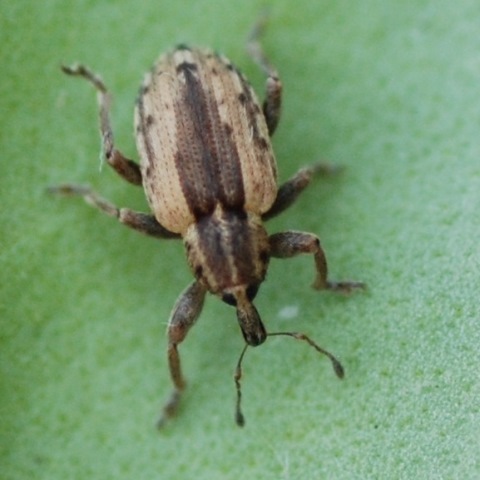
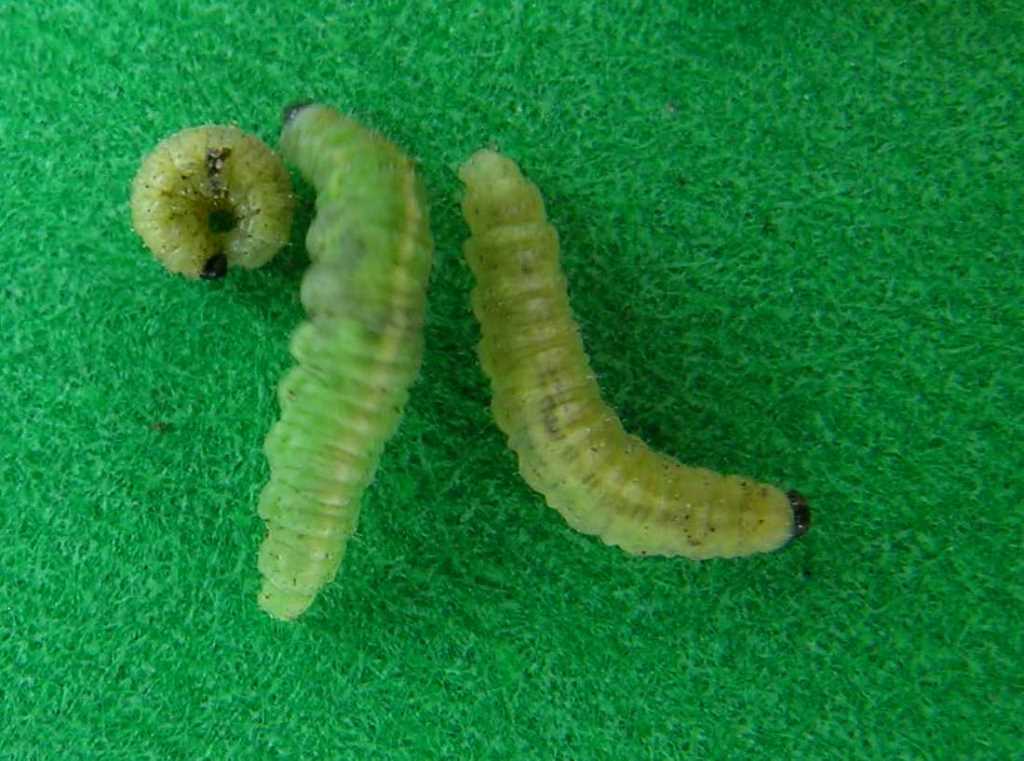
Figure 1. Alfalfa weevil adult Figure 2. Larvae of alfalfa weevil
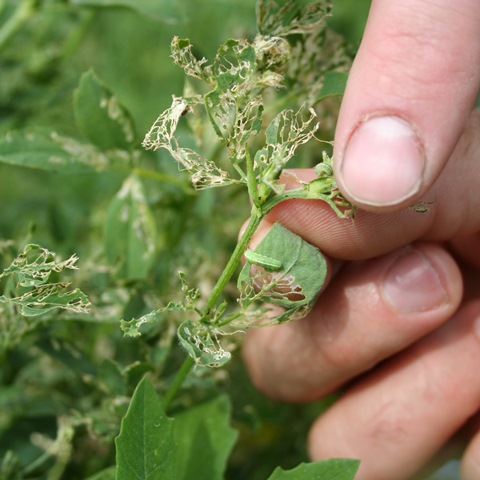
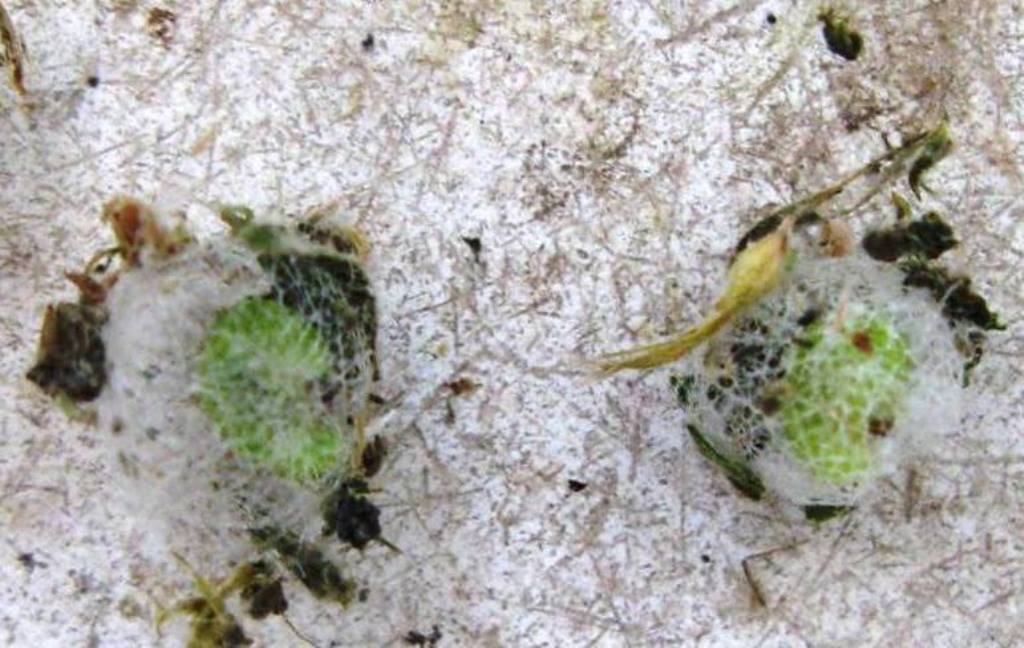
Figure 3. Alfalfa weevil larval feeding damage Figure 4. Pupae of alfalfa weevil
Sampling
Appearance of Larvae: Larvae develop through four growth stages known as instars.
First instar: About 1 to 2 mm long. Light yellow to tan, with a darker head.
Second instar: About 2 to 3 mm long. Yellowish-brown. Head darkening to black.
Third and fourth instars: 4 to 6 mm (3rd) and 6 to 8 mm (4th instar). Bright green with a white stripe down the centre of the back. Shiny black head capsule.
Appearance of Adults: Light brown with a darker stripe down the middle of the back. Being weevils, they have a narrow beak (or rostrum) extending in front of their head. Their chewing mouthparts are at the tip of this beak.
Sampling Methods:
Common sampling methods for alfalfa weevil include the shake-bucket method, sweep-net sampling and counting damaged stem terminals. Regardless of the method used, sampling should occur at multiple locations in a field, as weevil populations can be patchily distributed.
Shake-bucket method (hay crop): Walk in a "W" pattern. Randomly collect 30 stems by cutting them at the base (pruning shears can be used for this). Invert each cut stem over a white pail, and beat it against the side of the pail to dislodge any larvae. Alfalfa weevil larvae will drop to the ground when disturbed, so do not excessively disturb larvae while collecting plants to sample. Measure and record average height of crop.
Sweep-Net sampling (seed crop): Take 10 90-degree sweeps at each of several locations in the field using a 38 cm sweep net. Sweep-net sampling is only effective when alfalfa is at least 20 to 25 cm high, and should be done on calm, sunny days. The shake-bucket method is more sensitive at detecting small larvae than the sweep-net.
Damage Assessments: Randomly select stem terminals and examine for feeding damage. Determine the percentage of damaged terminals.
When to Sample: Degree day maps can provide alfalfa growers with guidelines for when to start monitoring. At about 175 to 200 degree days (using a base temperature of 9C) first instar larvae should be present. This would be a good time to start sampling. Alfalfa weevil can often be found by late-May, with higher levels present by mid-June. So sampling should generally begin in late-May or the first week in June at the latest.
Thresholds
Hay Crop:
Alfalfa less than 30 cm - 1 larva per stem.
Alfalfa 30 to 40 cm - 2 larvae per stem.
Three larvae per stem is generally economical to control regardless of height of the crop.
On regrowth for the second crop, 2 or more active larvae per crown (4 to 8 larvae per ft2) may require control.
Seed Crop: A nominal threshold is 20 to 30 third or fourth instar larvae per 90-degree sweep, or 35% to 50% of foliage tips showing damage. In some instances it may be practical to just treat hotspots and not entire fields.
Management
Early Cutting: Early harvesting can significantly reduce alfalfa weevil populations. Larvae are killed by desiccation or starvation. Hay fields can be cut in early bloom to manage high densities of alfalfa weevil larvae. In this situation harvest at early bloom is the best compromise between yield and quality during haymaking. Raking postharvest stubble can further destroy surviving weevil larvae. Monitor larval feeding on the regrowth, as some larvae may move underneath windrows for shelter and feed on the new growth.
Insecticides: Several insecticides are registered for control of alfalfa weevil. Many insecticides have restrictions regarding application when bees are foraging, and some insecticides registered for alfalfa weevil in alfalfa can not be applied while alfalfa is flowering. So check insecticide labels or the Guide to Field Crop Protection to find a suitable insecticide if an application is needed.
Intercropping: Alfalfa-grass mixtures have been shown to reduce alfalfa weevil densities compared to pure alfalfa stands. However, results have been variable between studies and species of grass.
Grazing: Research in Montana found that winter and spring sheep grazing reduced alfalfa weevil larvae by 40 to 70%.
Natural Enemies
Parasitic wasps: Several small wasps parasitize alfalfa weevil larvae and adults. Wasps in the genus Bathyplectes (Figures 5 and 6) parasitize alfalfa weevil larvae, and in some regions have provided good control of alfalfa weevil. Another wasp, Oomyzus, also parasitizes larvae of alfalfa weevil (Figures 7 and 8). In a 2016/2017 study, both parasitoids were found in a number of areas of Manitoba (Winnipeg, Fannystelle, Arborg, and Fisher Branch) with Bathyplectes up to 39.4% and Oomyzus up to 10.0% parasitism.
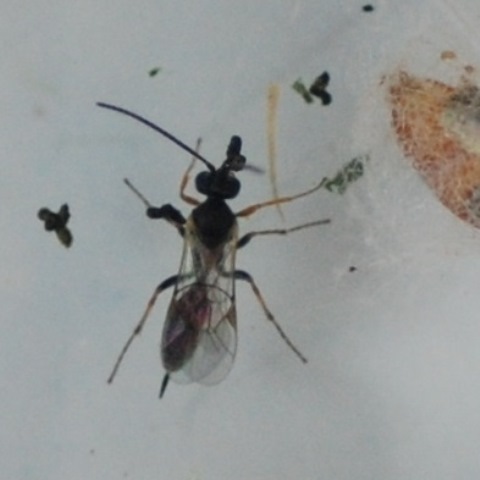

Figure 5. Bathyplectes (adult) Figure 6. Bathyplectes cocoons
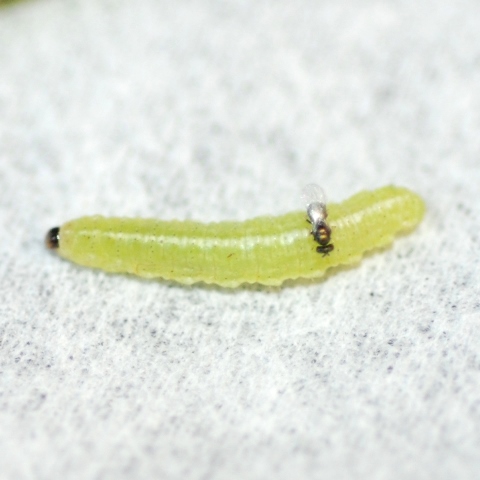
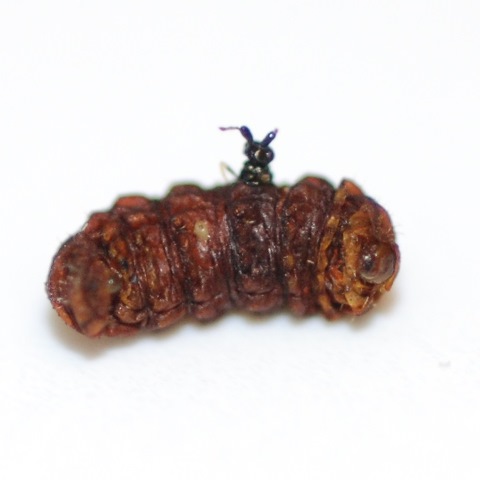
Figure 7. Oomyzus adult on a live alfalfa Figure 8. Oomyzus adult emerging from a weevil larva cadaver
weevil larva
Predators: Predators known to feed on alfalfa weevil larvae include lady beetles (Figure 9), damsel bugs, lacewings, and some spiders. However, if aphids are abundant the aphids may be preferred as prey over alfalfa weevil larvae. Some species of ground beetle and the fall field cricket can be major predators of alfalfa weevil adults.
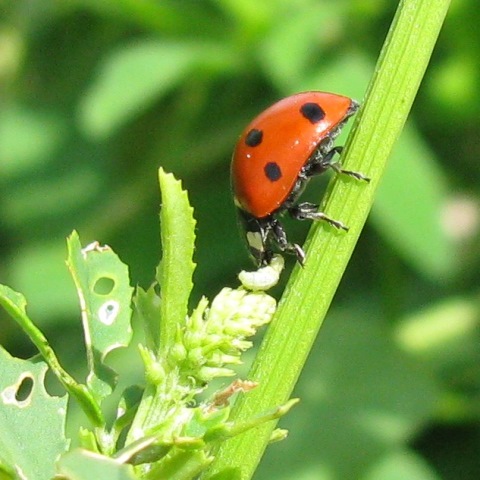
Figure 9. Lady Beetle.
Produced April 2018 by
John Gavloski, Entomologist, Manitoba Agriculture, and
David Ostermann, Pollination Apiarist, Manitoba Agriculture.

